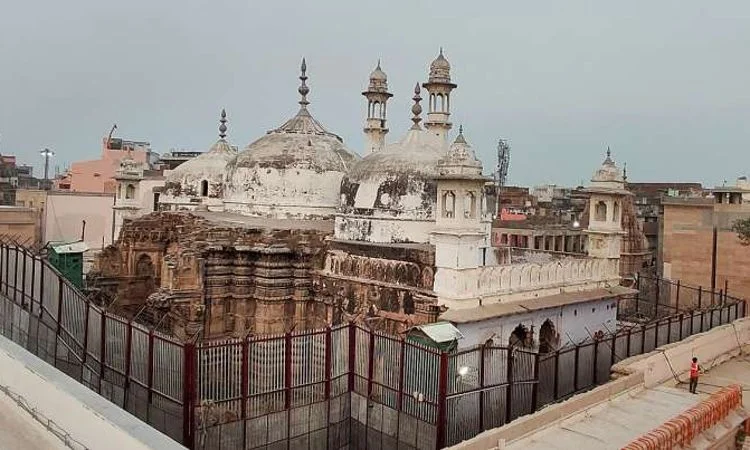The court has granted Hindus access to pray inside the Gyanvapi mosque. This verdict permits the beginning of religious ceremonies within the mosque grounds in the coming week.

In a key move in the Gyanvapi case, the court has allowed the Hindu side to say prayers within the Gyanvapi mosque. The verdict allows puja to begin within the mosque premises within the following seven days.
“Puja will begin within seven days. “Everyone will be able to perform Puja,” stated Advocate Vishnu Shankar Jain, representing the Hindu side.
Jain further stated that the district government will need to make plans within a week.
Following the Archaeological Survey of India’s survey results at the mosque, the Hindu side filed a plea in the Supreme Court on Monday to have the ‘wazukhana’ region of the Gyanvapi complex de-sealed.
The ‘Wazukhana’ was sealed in 2022 as per a Supreme Court ruling.
Vishnu Shankar Jain, the Hindu side’s attorney, petitioned the Supreme Court to allow the Archaeological Survey of India (ASI) to conduct another detailed survey in the ‘wazukhana’ area without causing injury to the ‘Shivling’.
Vishnu Shankar Jain believes that the ASI should be authorized to conduct a study.
According to the Economic Times, “I have filed a motion before the Supreme Court to vacate the stay order issued on May 19, 2023. ASI should be authorized to perform research and feature study on the ‘Wazukhana’ region. Only after the study will it be determined whether it is a fountain or a Shivling,” he stated.
The examination of the Gyanvapi mosque premises commenced after the Allahabad High Court dismissed a petition filed by Muslim litigants seeking a stay on the Varanasi court’s order for the ASI to conduct a scientific survey.
ASI conducted the survey, which began on August 4, using ground-penetrating radar and other scientific gear to determine what lay beneath the surface of the Gyanvapi mosque premises.
The team also examined the inner and exterior walls, the cellar, and other areas of the premises except the ‘wuzukhana’ (the location where Muslims do ablution before offering prayers).
Earlier on January 27, Vishnu Shankar Jain asserted—quoting the ASI report—that there was proof the Gyanvapi mosque was constructed following the destruction of a Hindu temple in the seventeenth century.
According to Jain, the ASI’s 800-page study mentions unearthing ancient scriptures in Kannada, Devanagari, and Telugu languages inside the mosque precincts. The scriptures mentioned Rudra, Janardan, and Vishweshwar and how the pillars of the demolished temple were utilized to build the mosque.
According to the ASI report on the Gyanvapi mosque complex, a pre-existing structure appeared to have been destroyed in the 17th century, and “part of it was modified and reused,” adding that based on scientific studies, there “existed a large Hindu temple prior to the construction of the existing structure.”
The Architectural Survey of India (ASI) stated that the “western wall of the existing structure is the remaining part of a pre-existing Hindu temple.”.
“An Arabic-Persian inscription discovered within a room states that the mosque was built in the 20th regnal year of Aurangzeb (1676-77 CE). As a result, the pre-existing construction appears to have been destroyed in the 17th century, during Aurangzeb’s reign, with a portion of it changed and repurposed in the contemporary structure. Based on scientific studies/surveys carried out, examination of architectural remains, exposed features and artifacts, inscriptions, paintings, and sculptures, it can be said that there existed a Hindu temple prior to the construction of the extant edifice,” the ASI stated in its report.















